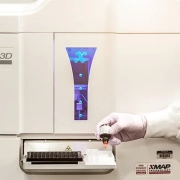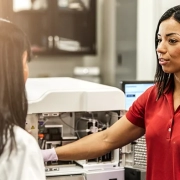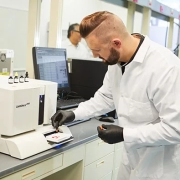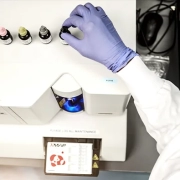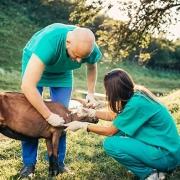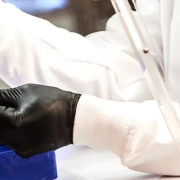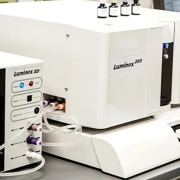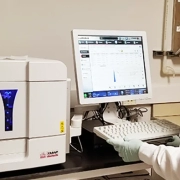COVID-19 and Characterizing the Immune Response: A Method for Isotyping Using xMAP® Technology
In a recent white paper, authors describe an assay modification to measure the COVID-19 antibody response in serum samples
While early measurements of COVID-19 patients’ antibodies against SARS-CoV-2 focused on the IgG isotype, IgA and IgM responses are also important for fully understanding the body’s immune response to COVID-19.
“IgA titers have been found to be significantly higher in severe COVID-19 patients, and remained higher for a longer time than what has been seen in milder cases,” the authors pointed out. “Serological IgM and IgA responses may also be predictive of survival, with anti-spike IgM and IgA enriched in surviving donors and nucleocapsid-specific IgM and IgA at higher levels in individuals who died.”
To help investigators better characterize an individual’s immune status, the Luminex Team designed a new method to expand our xMAP® SARS-CoV-2 Multi-Antigen IgG Assay for serological isotype profiling in a recent white paper.
The study began with the xMAP SARS-CoV-2 Multi-Antigen IgG Assay—a serological assay that uses multiplex beads to detect antibodies reactive to multiple SARS-CoV-2 antigens in human serum and plasma. The assay kit detects IgG antibodies in serum and plasma that bind to the viral nucleocapsid antigen, the spike 1 domain of the spike antigen, and the receptor binding domain portion of the spike protein. In the white paper, the assay was further modified to evaluate IgM and IgA responses.
For validation, the authors demonstrated the chronological evolution of the three isotypes in donor samples. They analyzed 20 samples collected prior to December 2019 and 66 samples collected from 40 unique donors who were SARS-CoV-2-positive. Nine donors were sampled at multiple time points, ranging from 1 to 116 days post-symptom onset. As part of this work, the team also tested multiple assay conditions and detailed the technical procedure and results.
The modified assay demonstrated the expected earlier onset of IgM and IgA, followed by a faster return to pre-infection levels compared to IgG (which is more prevalent). This was seen both in single-timepoint and longitudinal samples taken from individual donors post-onset of symptomatic illness.
Further, the authors investigated how the IgA, IgG, and IgM titers for all three antigens (nucleocapsid, RBD, and S1) changed following the onset of symptoms, and noted that serological “IgA and IgM collectively make up around 20% of total circulating antibody in the blood, and reflect different stages of the immune response during COVID-19 progression.”
This update to the xMAP assay enables the rapid and high-throughput quantification of the IgM and IgA responses to multiple viral antigens, supporting improved characterization of the human immune response to SARS-CoV-2. As the pandemic evolves, being able to determine a patient’s immune status will be a critical part of understanding COVID-19 progression.
Read more about the study here.
For Research Use Only. Not for use in diagnostic procedures.
Related Content:
- Luminex Diagnostic COVID-19 Offerings [Webpage]
- xMAP® Technology for Multiplex COVID-19 Serology Assays [Webpage]
- Will Molecular Diagnostics Work with the New COVID-19 Variants? [Blog]
- How COVID-19 Is Changing Respiratory Testing Algorithms [Blog]
- Considerations Regarding RNA Extraction Kits for SARS-CoV-2 Detection [Blog]
